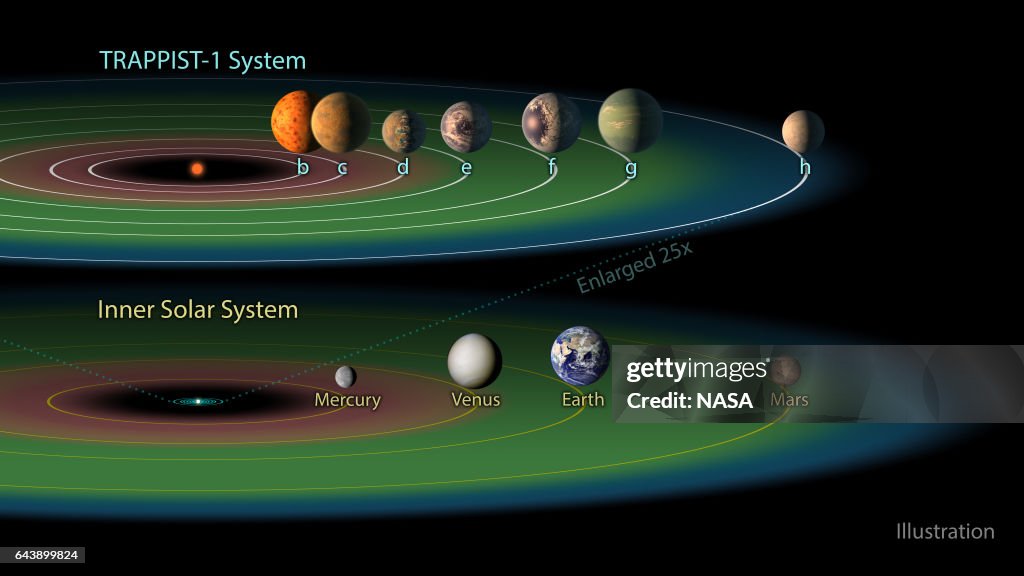NASA Telescope Reveals Seven Earth-sized Planets Around Single Star
UNSPECIFIED: In this NASA digital illustration handout released on February 22, 2017, the TRAPPIST-1 system is shown containing a total of seven planets, all around the size of Earth. Three of them -- TRAPPIST-1e, f and g -- dwell in their star's so-called "habitable zone." The habitable zone, or Goldilocks zone, is a band around every star (shown here in green) where astronomers have calculated that temperatures are just right -- not too hot, not too cold -- for liquid water to pool on the surface of an Earth-like world. The system has been revealed through observations from NASA's Spitzer Space Telescope and the ground-based TRAPPIST telescope, for which it was named after. While TRAPPIST-1b, c and d are too close to be in the system's likely habitable zone, and TRAPPIST-1h is too far away, the planets' discoverers say more optimistic scenarios could allow any or all of the planets to harbor liquid water. In particular, the strikingly small orbits of these worlds make it likely that most, if not all of them, perpetually show the same face to their star, the way our moon always shows the same face to the Earth. This would result in an extreme range of temperatures from the day to night sides, allowing for situations not factored into the traditional habitable zone definition. The illustrations shown for the various planets depict a range of possible scenarios of what they could look like. (Photo digital Illustration by NASA/NASA via Getty Images)

PURCHASE A LICENSE
How can I use this image?
€475.00
EUR
DETAILS
Restrictions:
Contact your local office for all commercial or promotional uses.Getty Images provides access to this publicly distributed image for editorial purposes and is not the copyright owner. Additional permissions may be required and are the sole responsibility of the end user. No commercial usage.
Credit:
Editorial #:
643899824
Collection:
Getty Images News
Date created:
February 22, 2017
Upload date:
License type:
Release info:
Not released. More information
Source:
Getty Images North America
Object name:
94620686
Max file size:
5295 x 2978 px (17.65 x 9.93 in) - 300 dpi - 2 MB